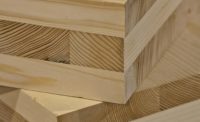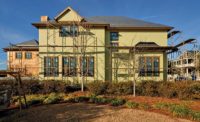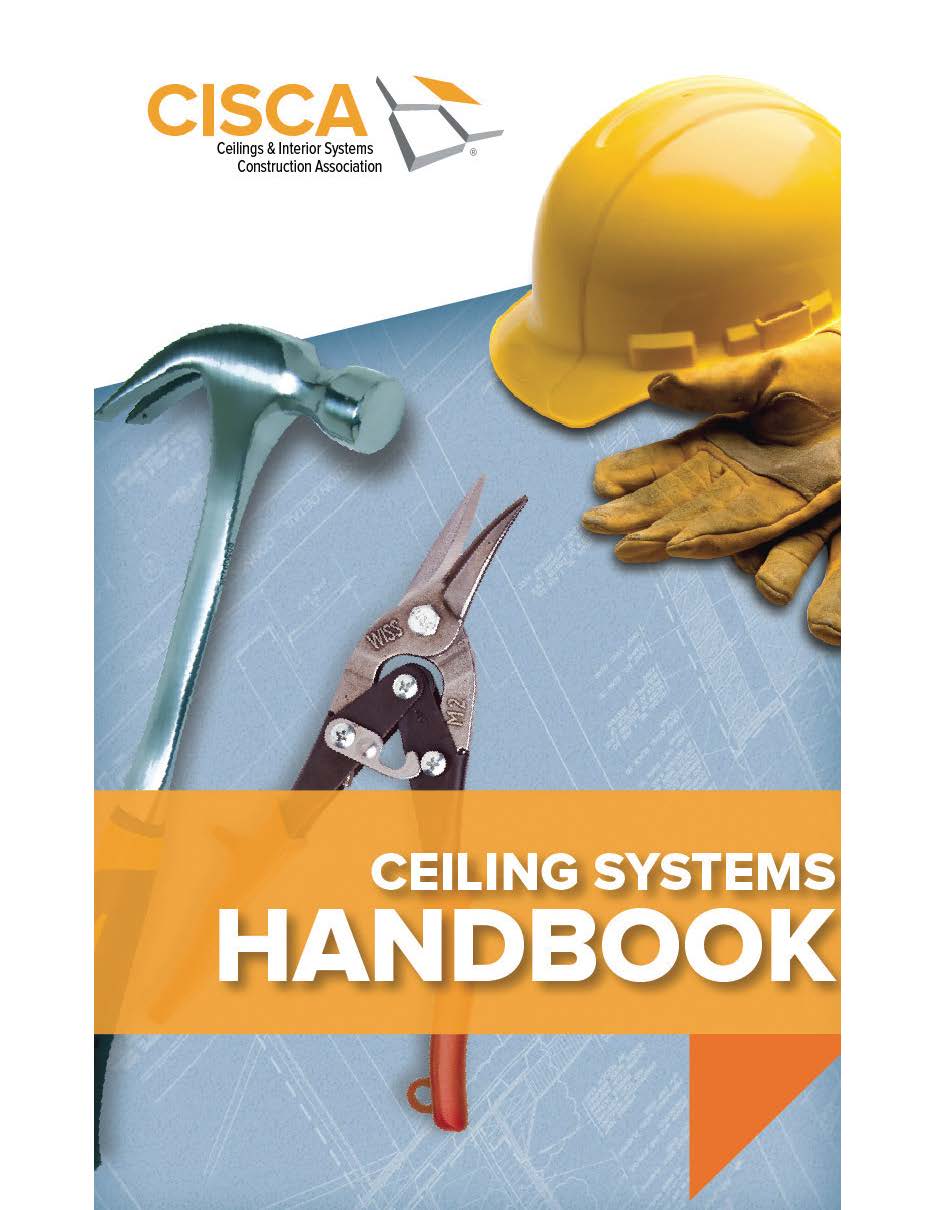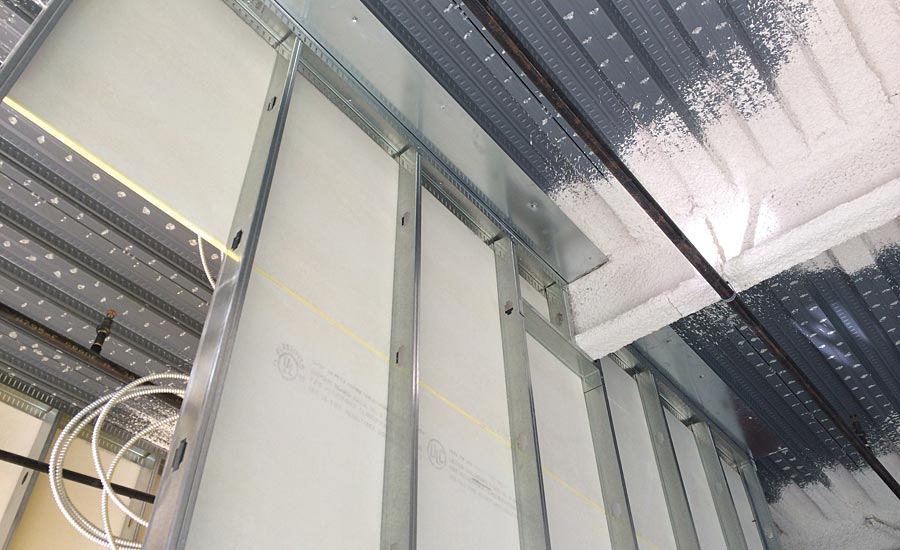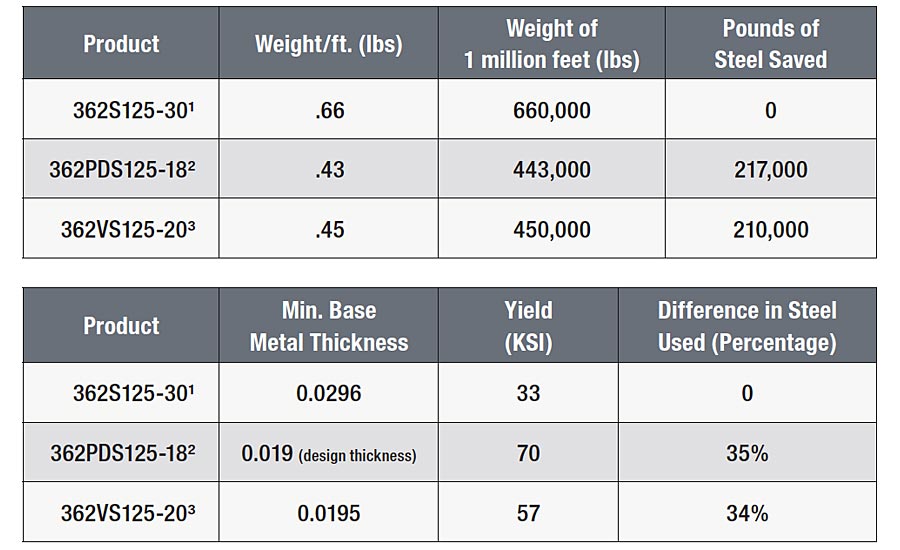Sustainability and the Rise of "EQ" Nonstructural Framing Systems
Put sustainability at the top of your list

Non-Load Bearing with EQ Viper Studs, and FAS Track 1000 Deflection Track.

Non-Load bearing wall with EQ Viper Studs, Slotted Top Track, and DDA Fire Block.

Non-Load Bearing Chase Wall with EQ Viper Studs, and TAB Track Screw-less Deflection Track.

The numbers do not lie, EQ nonstructural framing products can satisfy both design requirements and put sustainability at the top of the priority list of any commercial, industrial, mid-rise, and residential project.




The age of sustainability is upon us. Terms like green-building, recycled content, regional materials, life-cycle analysis, and environmental product declarations fill the air as architects, designers, and engineers plan out their respective contributions to creating aesthetic and environmentally sound structures.
This latest movement in the world of construction has given manufacturers of building products the responsibility to provide products that meet these standards. Initially manufacturers invested in a product life-cycle analysis to determine what their current products were made of and mapped out the process of manufacturing starting with material and energy inputs through the final packaging. These LCA’s gave life to Environmental Product Declarations that describe with great depth the entire manufacturing process, typically from gate-to-gate (i.e. once the raw materials entered the facility all the way to the products final packaging ready for delivery).
For the steel framing industry, which buys steel by the ton and sells finished goods by the thousands of feet, many of us began to look more closely at the potential to reduce the raw material input (hot-dipped galvanized steel) and maintain the products capacity. In other words, how can we produce a more efficient nonstructural wall stud? The answer lies in what we commonly now know as the “EQ” or equivalent stud products.
EQ Products
EQ products have been around since the mid-1990s with such brands as UltraSTEEL (discontinued), ProSTUD, and ViperStud, as well as a slew of others. Each of these proprietary products were developed on the simple concept of taking advantage of thinner yet stronger steel. With steel manufacturing technologies providing higher yields (KSI) in their chemistries, stud manufacturers commonly known as “studders” started to develop c-shaped nonstructural studs, often with advanced forming techniques and shapes, that met the old tried-and-true limiting heights of the original 25 (18 mils) and 20 (33 mils) gauge studs. Met with initial resistance, this movement quickly gained momentum especially with the greening of the industry.
Thinner steel means less steel. Remember when we mentioned that studders buy by the ton and sell by the foot (sic)? This simple concept, coupled with the research and development efforts by these manufacturers, succeeded in doing just that: Replacing the old thicker steel studs with thinner, sometimes better performing studs, while simultaneously meeting or exceeding the heights required by designers.
For example, if an architect was looking to specify a nonstructural stud to span 16 feet from floor to ceiling in a non-composite/fully braced condition for an interior partition wall at 5 SPF with a deflection of L/120 he could use a 35/8-inch stud with an 11/4-inch flange produced from 30 mil steel (362S125-30-33 ksi) and comfortably meet that height (maximum height of 17 feet, 7 inches when built at 16 inches on-center)1. Another option for this particular wall assembly could make use of an EQ member and still meet the height and deflection criteria specified.
Sustainably Sound
Looking at two options, a 3 5/8-inch ProSTUD member and a 3 5/8-inch ViperStud member, we will see that both of these “EQ” products also meet that height requirement under the exact same criteria. The ProSTUD 20 (362PDS125-18-70 ksi) and the Viper20 (362VS125-20-57 ksi) which span 16 feet, 8 inches and 16 feet, 11 inches respectively are good alternatives. In terms of sustainability, they are actually better, and here’s why.
Both of these EQ studs are manufactured from thinner and stronger steel. The difference in the base metal thickness is charted below.
Saving Steel
It’s amazing to see how much steel is actually saved when considering an EQ stud to the old tried-and-true option. Translate these numbers into millions of feet and thousands of tons per year and one can quickly see that the amount of steel saved in producing products that meet the project’s specific design requirements is staggering.
For the final reference to the “studders buy by the ton and sell by the foot” adage, a simple comparison in tonnage should be enough to convince any architect, designer, or engineer who sees sustainability as a priority for their project to look at EQ members for their project.
The numbers do not lie, EQ nonstructural framing products can satisfy both design requirements and put sustainability at the top of the priority list of any commercial, industrial, mid-rise, and residential project.
References:
- SSMA Product Technical Guide- 2015 (8/14/15 ed.)
- ProSTUD Product Catalog – (6/18 Clark Dietrich)
- CEMCO ViperStud Product Catalog – (Effective 5/11/2018)
Looking for a reprint of this article?
From high-res PDFs to custom plaques, order your copy today!





